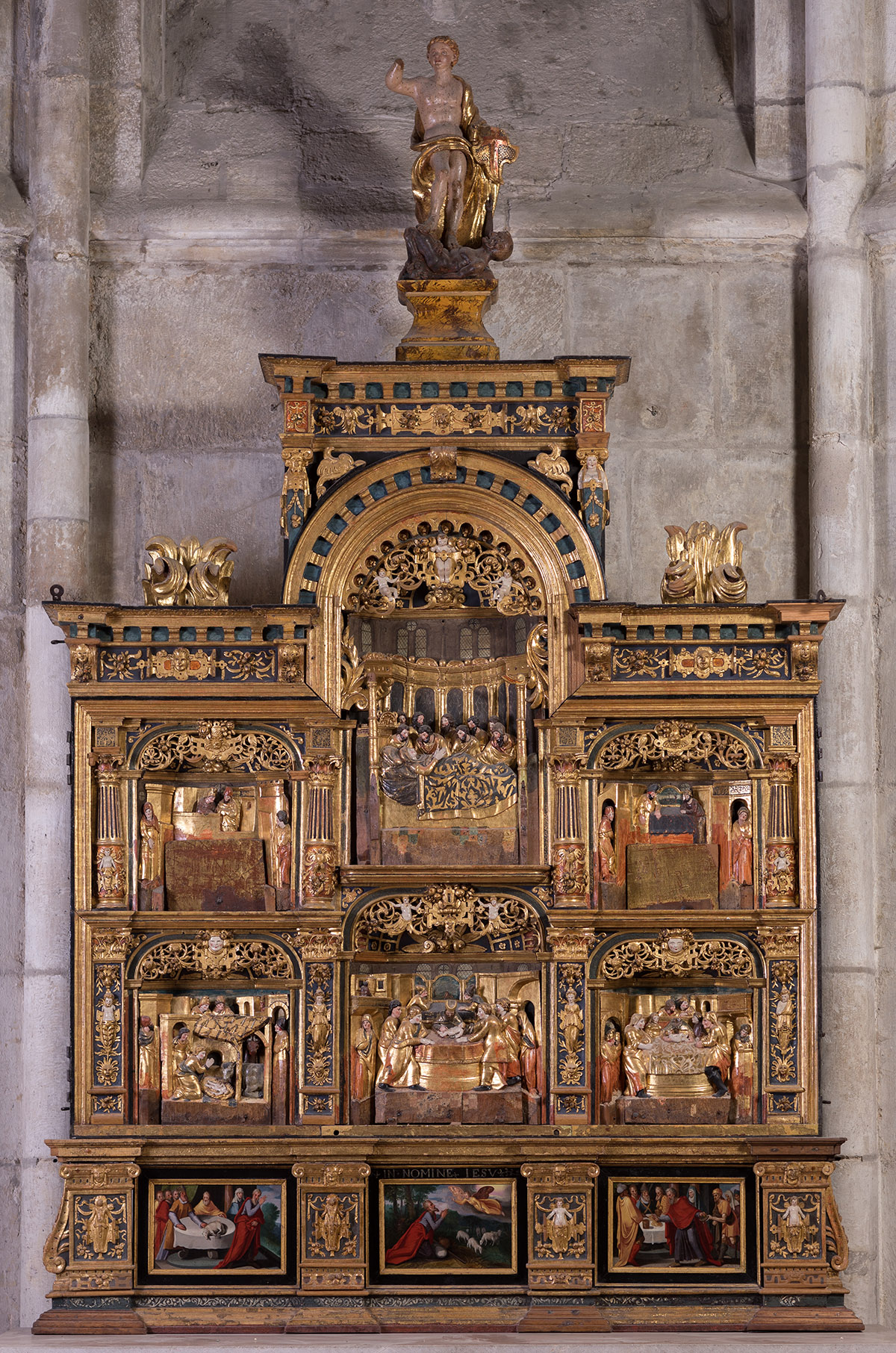Sweet Name Altarpiece
Sweet Name Altarpiece
This work was most likely acquired in Flanders by the ambassador Juan Alonso de Gámiz around 1558. It is a small altarpiece that was positioned on a pillar of the transept on the Epistle side. The space contained the family coat of arms and a burial place for the ambassador and his descendants, as well as the Confraternity of the Sweet Name of Jesus. The altarpiece remained in this location until 1856, when it was moved to another part of the cathedral.
It is an Early Renaissance work that was produced in Antwerp around 1550-1558. Although its ornamental repertoire displays an early adherence to Mannerist formulas inspired by the decorations of the Palace of Fontainebleau, with cartouches, Hermes, hanging cloths, masks and arabesques, its Flemish origin is confirmed by the control marks or punches on its two sides and at the base of two scenes in the first section. The polychrome addition is contemporary to the time when the carving was made. The altarpiece is a mix of painting and carving and has a triumphal arch typology. It is made up of a predella, two sections, three panels and an attic. The predella bears the paintings of Saint Joachim and Saint Anne rejected in the temple, the Apparition of the Angel to Saint Joachim and the Parents of the Virgin giving alms in the temple. The central panel depicts the Circumcision and Dormition of the Virgin, and only the Nativity and the Presentation are recognisable in the side panels, as the other two scenes have been lost, although it is most likely that they were themes associated with the infancy of Christ
Locution
Ficha técnica
BASIC BIBLIOGRAPHY
ECHEVERRIA GOÑI, Pedro L. “Renacimiento”, En: GONZÁLEZ DE SAN ROMÁN, Miguel (Dir.). Vitoria-Gasteiz en el Arte, vol. II, Vitoria-Gasteiz: Gobierno Vasco, Diputación Foral de Álava, Ayuntamiento de Vitoria-Gasteiz, 1997, pp. 346-347.
MARTÍN MIGUEL, María Ángeles. Arte y cultura en Vitoria durante el siglo XVI. Vitoria-Gasteiz: Ayuntamiento de Vitoria-Gasteiz, 1998, pp. 347-352.
BARTOLOMÉ GARCÍA Fernando R. “Retablo del Dulce Nombre”. En ECHEVERRÍA GOÑI, Pedro Luis (Dir.). Erretaulak. Retablos. Catálogo del Centro de patrimonio cultural vasco. Tomo II, Vitoria-Gasteiz: Servicio Central de Publicaciones del Gobierno Vasco, 2001, pp. 609-615.
LADRÓN DE GEVARA ORTEGA, Alfonso. “El retablo flamenco manierista del Dulce Nombre de Jesús de Vitoria (1558)”. Ars Bilduma, n.º 3, 2013, pp. 167-191.






